Meet MythAmerica LITE
Chatty Cathy’s Great Granny
As one of the earliest of the Baby Boomers, born in 1946, I found myself sometimes just a bit too old for the latest childhood craze as they came along in the 1950s and 60s. For instance, by the time Christmas rolled around in 1959, I had turned 13. Too late to ask for the new Barbie Doll that had come out on the market the previous March. I was a teen already. Too old to play with dolls…even a doll that looked like a top-
The next year I was bummed again. By Christmas time I was 14, definitely too old to ask for the latest New Thing—the Chatty Cathy doll that had been introduced earlier in 1960 in amazing TV commercials.
She TALKED! She said 11 different random phrases, like “I love you,” or “Please take me with you.” Instead I could only simmer in quiet envy when we visited my aunt and uncle’s home after Christmas. My little cousin Cathy had received her own Chatty Cathy from Santa. Bummer.
At the time I thought that such a doll was an amazing example of modern scientific ingenuity. Up until then, most dolls had nothing to say. And the few dolls that did, just said something that vaguely resembled “MaMa” when you tipped them over. (The sound was from a little gadget inside her tummy that was just like the one that made toy cows go “Moo” when you tipped them over.)
Thus I was quite surprised to find out that I was wrong. The concept of a talking doll long pre-
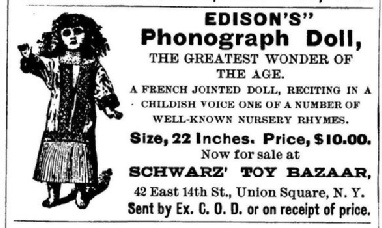
She didn’t have a name when you bought her. She was just “Edison’s Phonograph Doll, the Greatest Wonder of the Age.”
Thomas Edison had first introduced his new invention of the phonograph in 1877. Almost immediately after that both he and others began thinking up ideas on how to use the gadget, and one of the first gimmicks they thought of was to use it to create a talking doll. It took a while—first tinkerers had to figure out how to miniaturize the phonograph itself to fit inside a doll’s body.
By 1889 they’d worked out the bugs, and production began on such a doll. There was great enthusiasm in the media of the time for the idea.
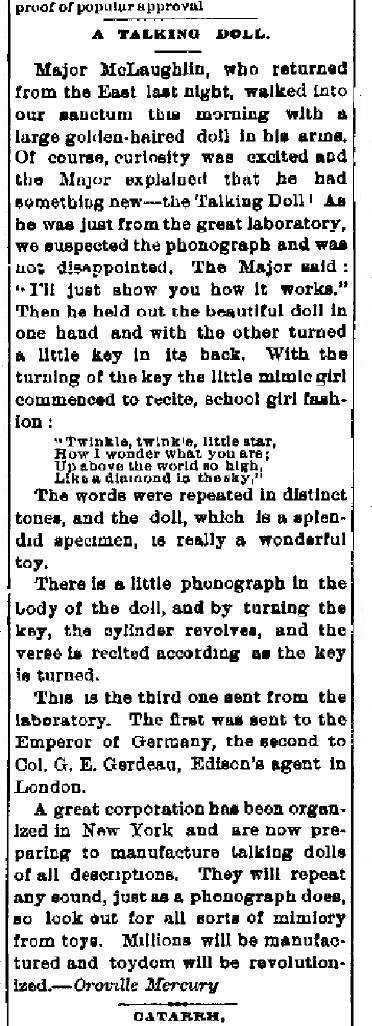
At the end of the newspaper story above (from the Oroville (CA) Mercury newspaper) the reporter notes, “A great corporation has been organized in New York and are now preparing to manufacture talking dolls of all descriptions. They will repeat any sound, just as a phonograph does, so look out for all sorts of mimicry from toys. Millions will be manufactured and toydom will be revolutionized.”
Well, not quite. And therein is an interesting story.
Production of the doll began with great enthusiasm. Here’s the factory below.
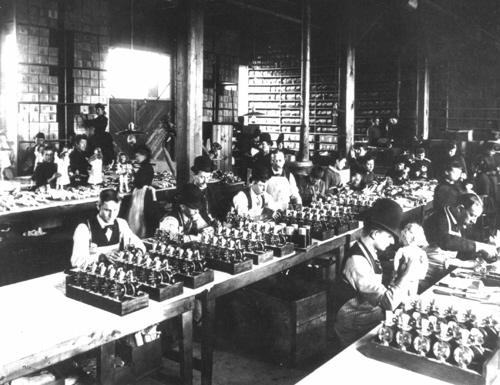
(I always get a kick out of the pictures of male factory workers of that period who obviously went to work every day in bowler hats, vests, and ties!)
The doll was cleverly made. She was 22 inches tall, so you can imagine the size of the teensy little phonograph that had to fit inside her tummy! It was about 7 inches tall. It was just like the full-
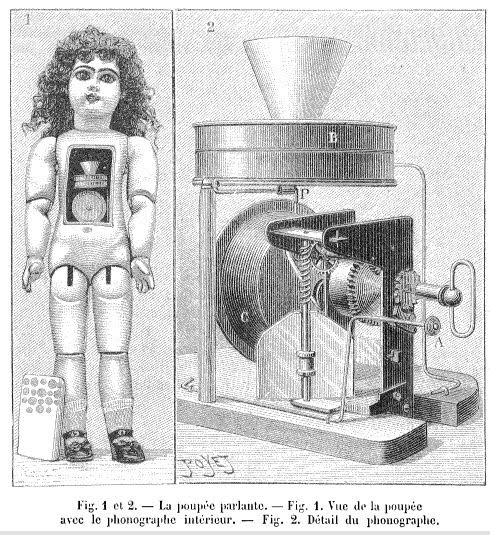
The doll was a bit clunky, rather than cuddly. She weighed four pounds because her torso was tin metal, her jointed arms and legs were wood, and her head was bisque, an unglazed porcelain material that was popular for doll heads at the time, since it could be tinted to have a very “lifelike” facial appearance.
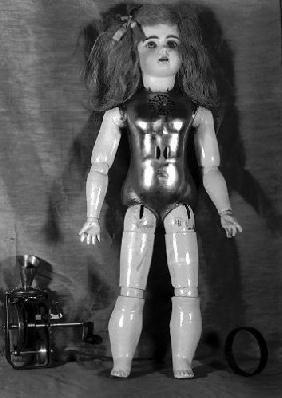
They were manufactured to be sold in two different price ranges: For $10 you got a talking doll in a simple “chemise” dress.
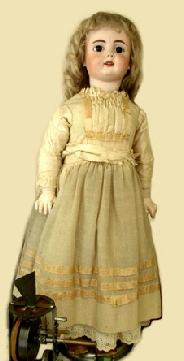
For $25—a full month’s wages or more for the average worker of the time—you got a talking doll all decked out in fashionable finery.
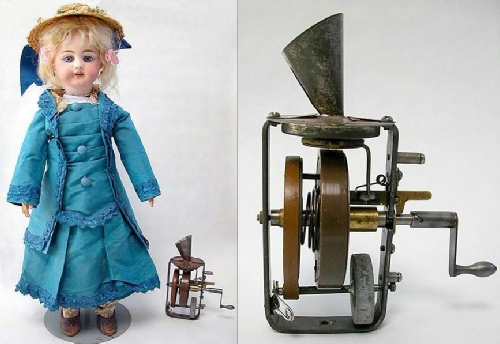
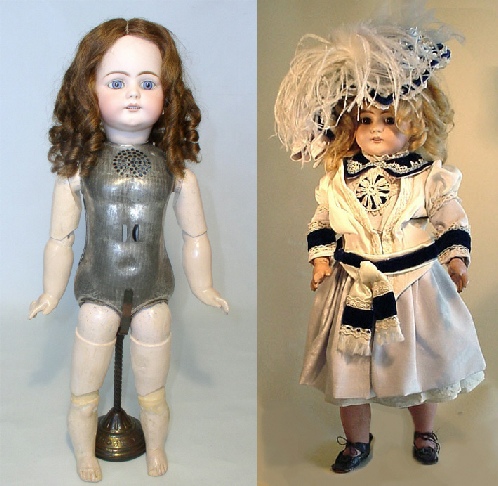
Each doll recited only one 6-
And there was no “wind-
Recently sound experts have been able to extract and play back the sound from several of the remaining antique mechanisms. You can hear the recordings on the PBS website at the link below. (Scroll down on the linked page to the series of choices of recitation of nursery rhyme.)
After hearing them, you can perhaps understand why even Tom Edison himself admitted later, “…the voices of the little monsters were exceedingly unpleasant to hear."
That is, when you could hear them at all.
Unfortunately the delicate mechanism was too fragile for rough usage, and the steel stylus caused the wax record to wear out extremely rapidly.
The first dolls were offered for sale on April 7, 1890, at the Lenox Lyceum in New York. Although 2,500 had been shipped by Edison to the Toy Manufacturing Company in March [I assume to be dressed and packaged], less than 500 completed dolls were actually sold and most of those were returned by unhappy customers. Production ceased at the beginning of May, 1890 and the dolls were withdrawn from the market. Returned dolls, along with the large remaining stocks of unsold dolls at the Edison factory, were sold off cheaply with the phonographs removed. All Edison dolls are very scarce today but those with their original phonograph intact are extremely rare, with only a few survivors known to exist. (The majority of Edison dolls today either have no phonograph mechanism or are fitted with a replica.) [Source]
Yes, Chatty Cathy’s Great Granny had a career that lasted all of a month.
By early 1891 it was clear what her fate would be. A Canadian paper of the time had a far less glowing report of the doll than had the Oroville, California paper barely a year before.
February of 1891: "One of Edison's talking dolls has reached Winnipeg (Canada.) It is at Miss Maycock's store and is inspected daily by a large number of people. It is a very good evidence of the uses to which the phonograph can be applied, but as a conversationalist or an elocutionist, the doll cannot be pronounced a success. The piece which the manufacturer has arranged for the lifeless talker to say is that familiar old nursery rhyme, 'Jack and Jill.' When the crank is applied to the mechanism and turned, the sound is emitted from a perforated plate on the breast of the doll. At first it is hard to distinguish any words, but by listening attentively and following the rhyme from the start, every word can be heard although not distinctly. As a novelty it is interesting."
Miniature record players improved in the coming years, particularly in sturdiness once they started using celluloid instead of wax for recording. So a handful of other doll companies, particularly in Europe, tried to make phonograph dolls in the coming decades. A French doll named Bebe Phonographe made by the Jumeau Company was introduced in 1894 that could speak 35 words as well as sing and tell stories. But it was way too expensive for the “mass market” and few were sold.
Records show that in 1939 Effanbee, a popular doll company at the time, tried marketing a doll it called “Tousle Haired Lovums” that could also sing and recite nursery rhymes. But there is almost no information on those on the Net, which would indicate it was not in the slightest a big seller. I’ve only found one picture of a sample and her talking mechanism.
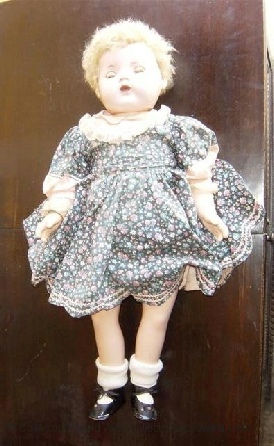
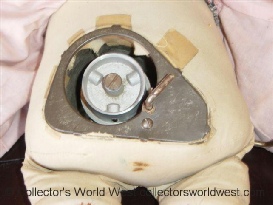
THL evidently didn’t strike the fancy of Depression and WW2 era kids. If she did, there’d be lots for sale on Ebay, as there are of Shirley Temple dolls. A doll search on “Shirley Temple” on Ebay yields over 2,500 dolls and accessories for sale. A search on Tousle Haired Lovums yields zero.
No, talking dolls never caught on as a fad again until Chatty Cathy came along in 1960.
But there is an interesting footnote to Cathy’s story that will likely even interest male readers.
Chatty Cathy was the inspiration for episode of The Twilight Zone entitled "Living Doll" originally broadcast November 1, 1963. June Foray, who had been the voice of the original Chatty Cathy, provided the voice for Talky Tina, the episode's evil doll. One of her phrases was, "My name is Talky Tina, and I'm going to kill you." [Wiki: Chatty Cathy]
In the episode, a little girl’s momma buys her a wonderful talking doll.
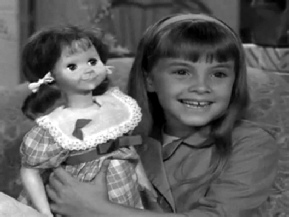
But her stepdad is jealous of the mom’s attention to the child and resents the doll.
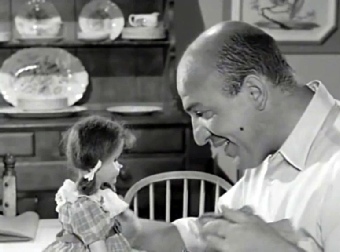
As the plot progresses, it becomes obvious that the doll has a mind of its own, and realizes that the man despises it. The mother and child do not realize what is happening. But when the man becomes aware that the doll really is taunting him, he takes it to the garage and tries to destroy it—with a table saw, with a blowtorch—but nothing can touch it.
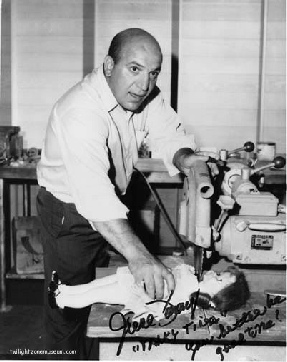
By the end of the episode, the man trips over the doll in the middle of the night as he starts down the stairs. He tumbles down the long stairs and is found dead by his wife…next to the doll. Who opens its eyes and says to her, “My name is Talky Tina…and you better be nice to me.”
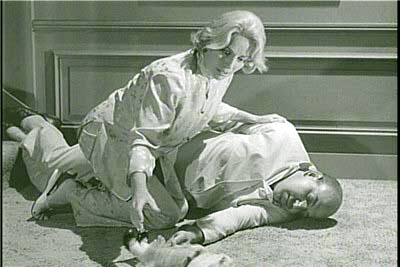
You can read the whole Twilight Zone plot on Wikipedia if you are so inclined. It brought back creepy memories—I was a Twilight Zone junky in my teens, and thus I’m sure I would have seen the original episode of this when it aired in 1963.
You can see the creepiness for yourself in this two-
I’m suspicious when I saw that episode in 1963 it made me glad I never got that Chatty Cathy doll back in 1960!
Then again, now that I’m much older and nostalgic—and not so easily spooked…nah, I wouldn’t want a Chatty Cathy doll even now, even though you can buy vintage ones on Ebay.
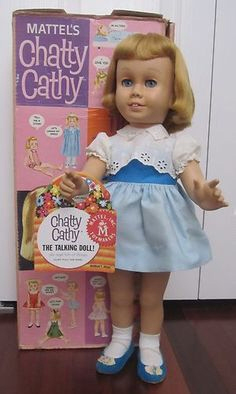
They are priced anywhere from $100 or so on up. The one above would sell for about $250. And I saw one advertised, in mint condition in the original box with the tags still on priced at…$1,750. That mint condition one did look terrific … but she can’t even talk any more! No, I’d not be willing to pay that much for a piece of nostalgia.
But I must admit I was just a teensy bit tempted when I found I could get an actual Talky Tina doll on Amazon.com for just over $100! She’s a modern full size, 18 inch, talking replica of the doll that was in that episode, and she is in a vintage “black and white”!
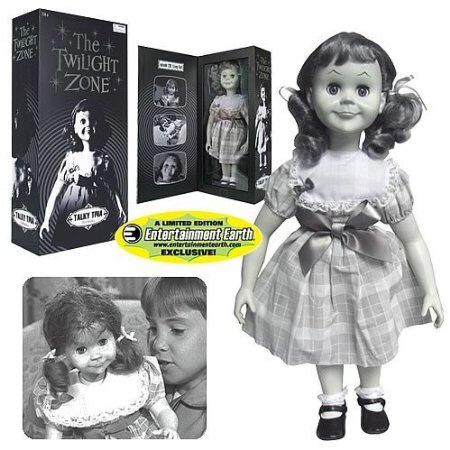
She comes loaded with the following phrases from the episode: “My name is Talky Tina, and I love you very much.” “My name is Talky Tina, and I'm going to kill you.” “My name is Talky Tina, and you'll be sorry.’
Or, if you are so inclined, you can get a full-
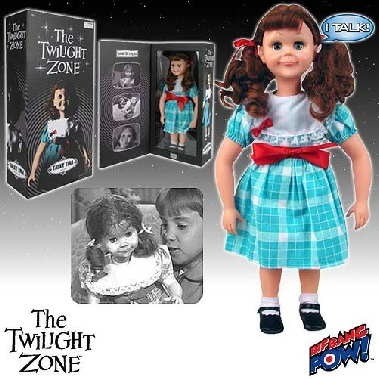
If you aren’t quite willing to pay that much, you can get a little 6.5 inch black and white action figure, a “San Diego ComicCon 2010” special, for under $20. She, however, doesn’t talk.
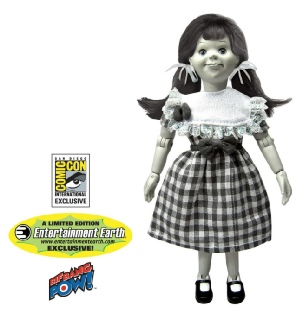
Nor does this even less expensive little 3.5 inch action figure. But it’s under $14.

Now that I might be willing and able to pay, just for the novelty of the item to put on a shelf for display among my small pop culture collectibles!
I would not, however be willing or able to pay for one of those original Edison Talking Dolls now. They usually run $5000 or more from sources like Ebay. And most of those don’t even have the sound mechanism in them, as they were part of the rejects from the original failed marketing effort in the 1890s.
~~~~~
If you found Chatty Cathy and
her greart granny interesting,
you might also be interested in reading about
The Dark Side of Barbie.

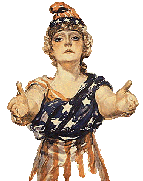
Exploring our past to sort out myth from reality
Share this Page on
Facebook or Twitter

These are the voyages of the TimeShip Anachron.
Our Mission: To boldly explore the past, dispelling
mythinformation and mythconceptions
of American History along the way.
 Visit us on Facebook
Visit us on Facebook